The Hawaiian Goby May Be Tiny, But It Can Do Amazing Things
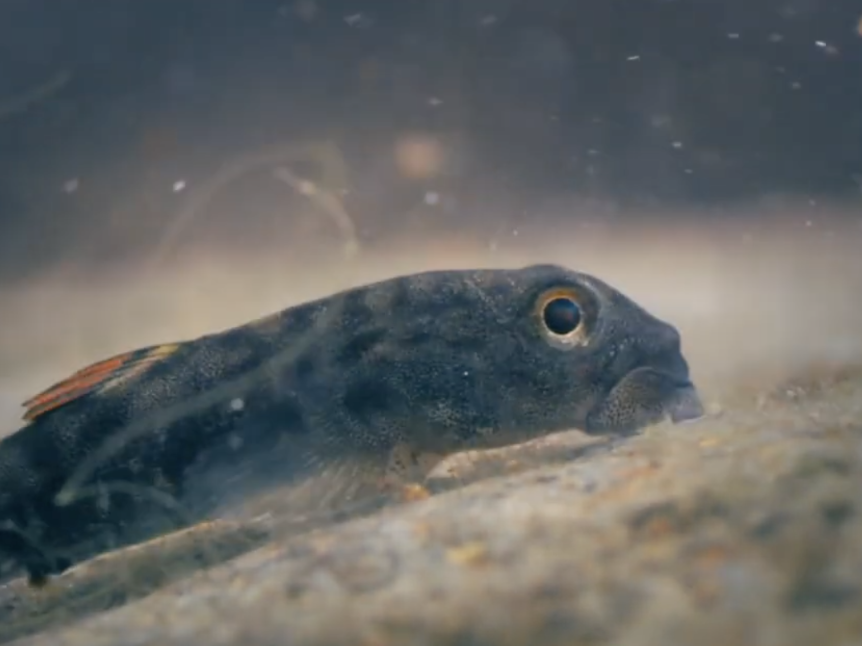
Move over mountain goats and Navy SEALs, there’s a new climbing legend, and it’s three inches long with suction-cup hips and a mouth made for scaling cliffs. Meet the Nopili goby, Hawaii’s native daredevil fish that pulls off one of nature’s most jaw-dropping stunts: inching its way up vertical waterfalls hundreds of feet tall using a combo of face-biting, belly-scraping, and pelvic suction. This isn’t just a quirky side quest. It’s a life-or-death migration, and only those who reach the top get to reproduce.
1. Meet the Waterfall-Climbing Goby
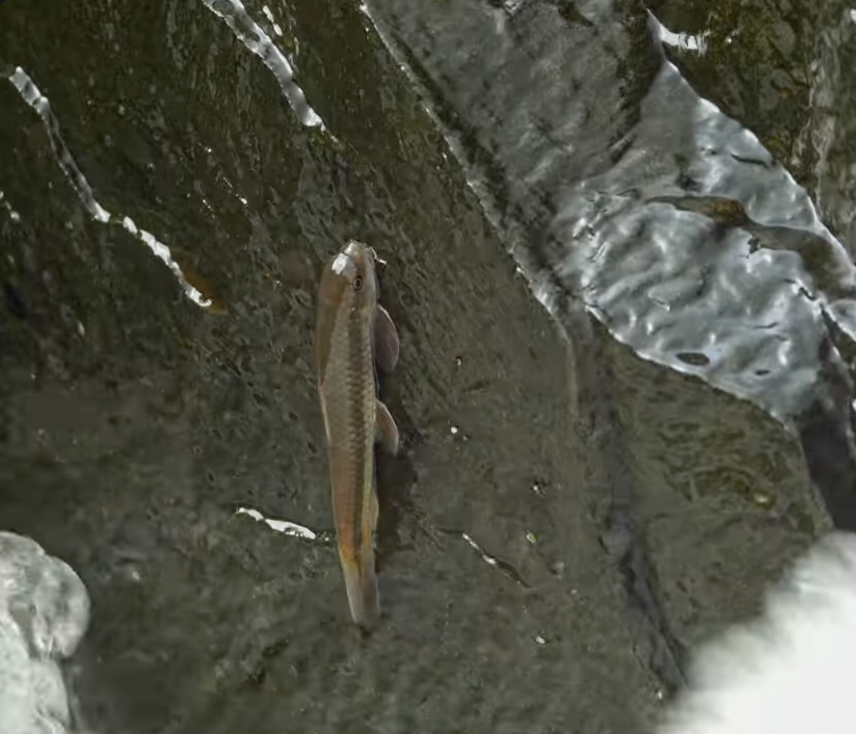
In the lush, rain-drenched streams of Hawaii, a tiny fish pulls off one of the most incredible natural stunts on Earth. The Nopili goby, or Sicyopterus stimpsoni, spends part of its life in the ocean before migrating back upstream to spawn. But unlike salmon, it doesn’t just swim against the current; it climbs up near-vertical waterfalls using nothing but its mouth and midsection. Some of these rock faces stretch over 300 feet high, a brutal journey for a creature that maxes out at three inches long. Picture a goldfish scaling the side of a skyscraper, and you’re starting to understand the absurdity. Yet, for this goby, it’s not a party trick. It’s a matter of survival.
The fish begins its life in freshwater streams, but its larvae drift out to sea, growing stronger in the ocean before returning months later to the base of the same waterfall. The climb is the final test, and only those who make it to the calmer pools at the top get to reproduce. This natural gauntlet ensures that each new generation descends from the fiercest little climbers. Biologists refer to this as an “amphidromous” lifecycle, a rare and arduous evolutionary path found in only a few fish species worldwide. Hawaii’s volcanic landscape, carved by erosion and rainfall, created a uniquely vertical world. And the goby rose to the challenge literally.
2. Nature Gave It a Built-In Suction Cup
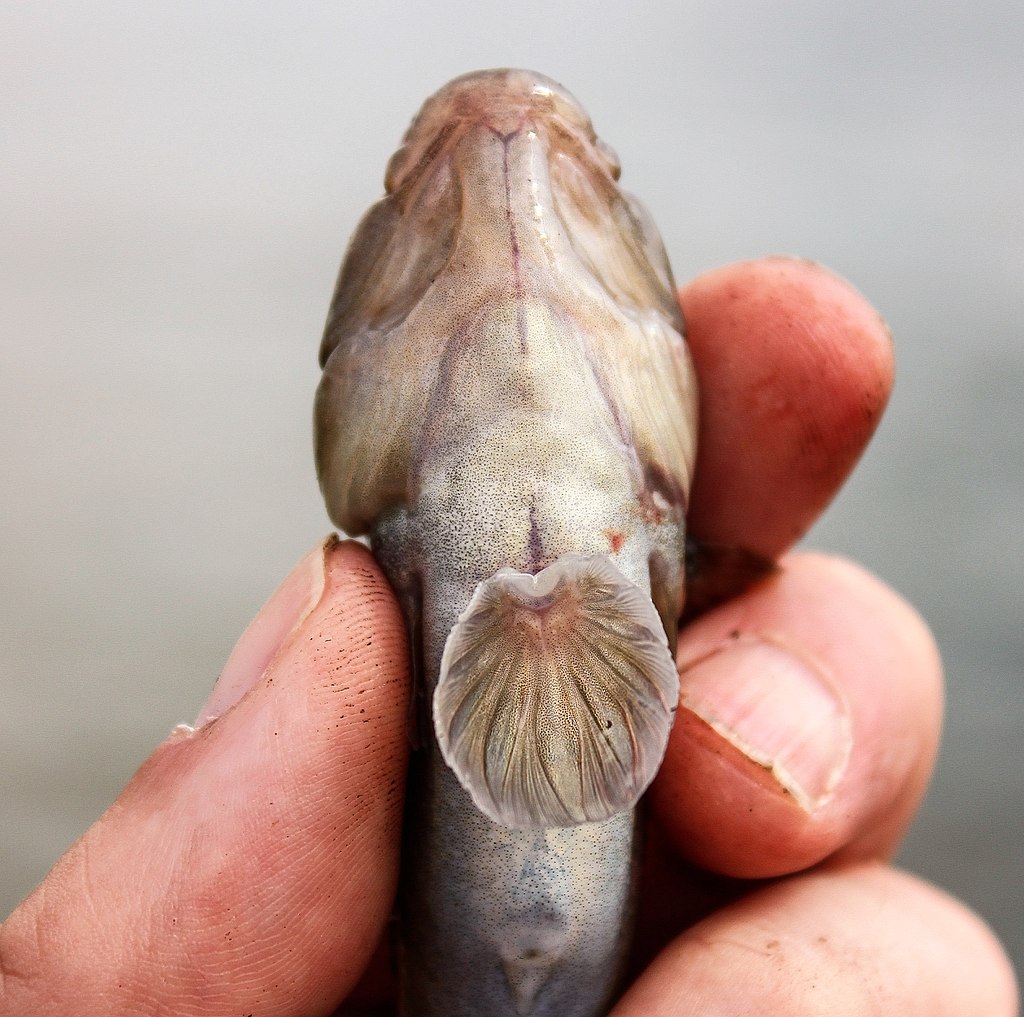
When you spend your days trying not to be swept off a cliff by a raging waterfall, suction is your best friend. Luckily, the Nopili goby’s pelvic fins have fused into a remarkable adhesive disc, essentially turning its undercarriage into a living suction cup. This evolutionary upgrade allows the goby to anchor itself to slick, wet rock faces while water barrels down over it with a force that would knock most creatures into oblivion. The suction disc grips tightly against vertical surfaces, helping the fish rest between movements and resist being washed away. It’s not pretty, but it’s brutally effective, and the physics behind it are gaining attention far beyond the streambed.
Engineers and biologists have been studying this suction system for its potential in technology and medicine. Its combination of wet-surface adhesion and flexibility is something roboticists dream about when building machines that need to scale walls or operate in submerged environments. Bioinspired tools modeled after the goby’s suction disc are being prototyped for everything from underwater drones to surgical grippers. A 2008 study published in the Journal of the Royal Society Interface revealed that the goby’s suction force can exceed its own body weight multiple times, allowing it to pause mid-climb with remarkable tenacity. In other words, this fish doesn’t just cling. It sticks the landing, over and over again, like a tiny, waterproof Spider-Man.
3. It Uses Its Mouth to Climb
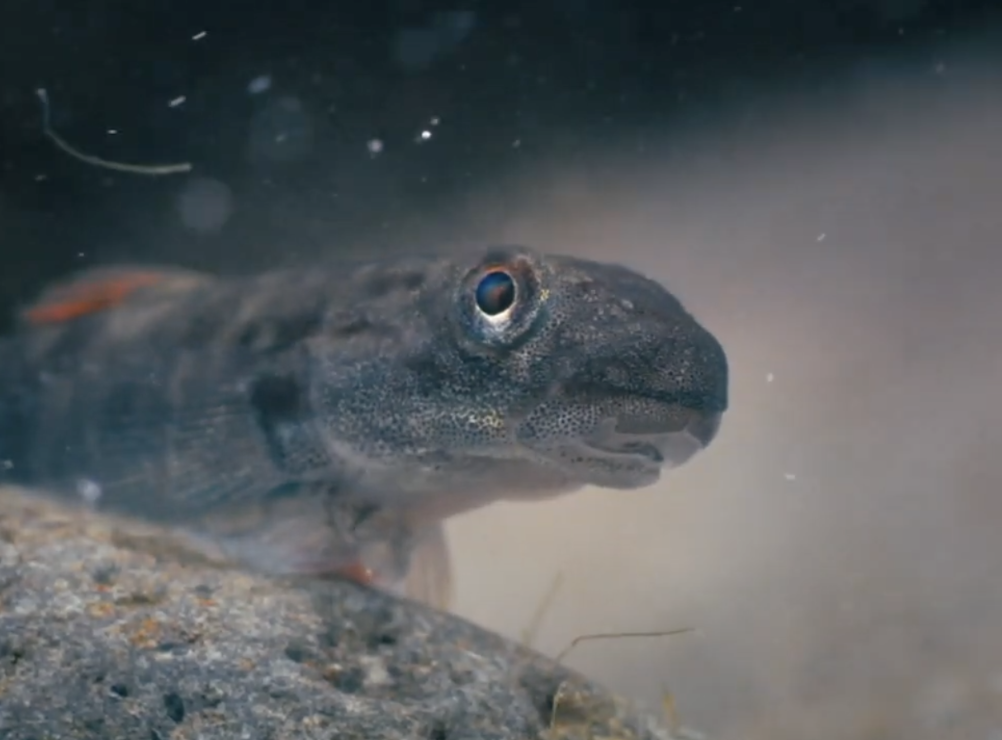
If suction alone sounds impressive, get ready for the goby’s secret weapon: its face. The Nopili goby uses its mouth as a climbing tool, gripping onto the rock and yanking itself forward in a move scientists describe as “inching locomotion.” It’s an odd sight that this little fish latches on with its lips, then drags its body up inch by inch, alternating between mouth and pelvic suction like a living ratchet. There’s no leap, no flail, no graceful flick of the tail. It’s gritty, slow, and methodical. Think of it as rock climbing without arms, using only your mouth and belly to cling your way up a waterfall. It’s so unusual that biologists had to invent new terminology to describe it.
This dual-anchor strategy gives the goby the edge in Hawaii’s uniquely steep and fast-moving stream environments. The mouth isn’t just there for feeding. It’s biomechanically adapted to grip irregular rock surfaces, providing forward momentum during each pull. It grips, holds, and helps stabilize the fish as it climbs against gravity and current. Researchers have observed that this climbing sequence is nearly rhythmic, almost meditative in its consistency. No other known vertebrate climbs quite like this, and certainly not at a scale that would make scaling a 30-story building look like a morning jog. The goby may be small, but it’s pulling off one of nature’s most original locomotion strategies one bite at a time.
4. It Has Teeth… On Its Belly
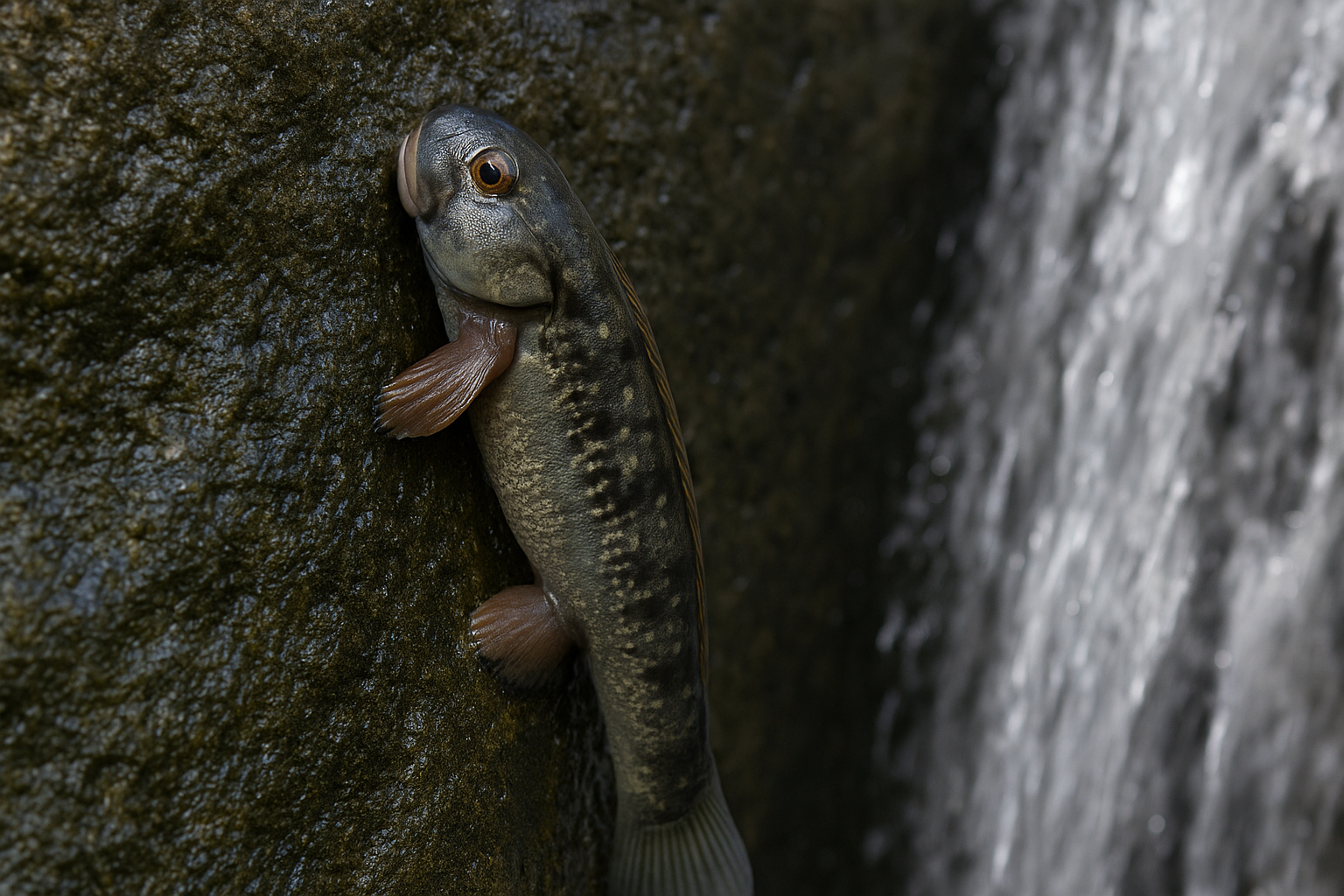
As if climbing waterfalls with your mouth weren’t hardcore enough, the Nopili goby ups the ante by sporting teeth on its belly. These aren’t chompers for chewing. They’re flat, scrape-like structures called dermal denticles that line both the mouth and the midsection. Essentially, this fish is part suction cup, part sandpaper. As it presses against the rock, the teeth help grip the surface by increasing friction, like cleats for vertical walls. It’s not trying to pierce the stone. It’s trying to stick to it, one tiny vibration at a time. If you’ve ever rubbed your hand on sharkskin, you’ll get the texture: rough, gritty, and designed to resist slippage.
Scientists believe these belly teeth are crucial for stability, especially during climbs where the water’s velocity increases and the surface becomes dangerously slick. High-speed footage has shown the goby using both mouth and midsection in tandem, anchoring itself with near-perfect coordination. This isn’t brute strength. It’s finely tuned biomechanics that evolved over thousands of years. Researchers have noted that without these specialized teeth, the goby would lose its grip and tumble back downstream. In other words, its survival hinges on a stomach full of friction. Evolution had no interest in streamlining the goby. Instead, it turned the whole fish into a climbing apparatus suction, scrape, bite, repeat.
5. The Climb Can Take Days

Don’t expect a dramatic leap or a race to the top. This journey is a slow, grinding crawl that would make a sloth look impatient. The Nopili goby ascends just a few inches per hour, stopping frequently to rest and recover. It might only advance a few body lengths in an entire day. Waterfalls like the one at ʻAkaka Falls on the Big Island can reach over 400 feet, and while not all gobies climb ones that tall, some documented routes exceed 300 vertical feet, requiring two to three full days of relentless inching. There’s no shortcut, no downstream Uber, just sheer biological determination. During the climb, the goby endures pounding currents, risk of dehydration, and predators that treat the exposed wall like a buffet line.
What makes this even more impressive is that the goby doesn’t give up halfway. If it does, it doesn’t just lose a medal. It loses its shot at life. The freshwater pools at the top are its only viable breeding grounds, and those who don’t make the ascent don’t reproduce. This process of “selective migration” ensures only the toughest, grittiest gobies pass on their genes. Evolution is running a boot camp here, and the gobies are training like elite commandos. It’s not about speed or elegance. It’s about showing up, gripping tight, and surviving long enough to get lucky in the quiet pools above.
6. Only the Strong Survive (and Reproduce)
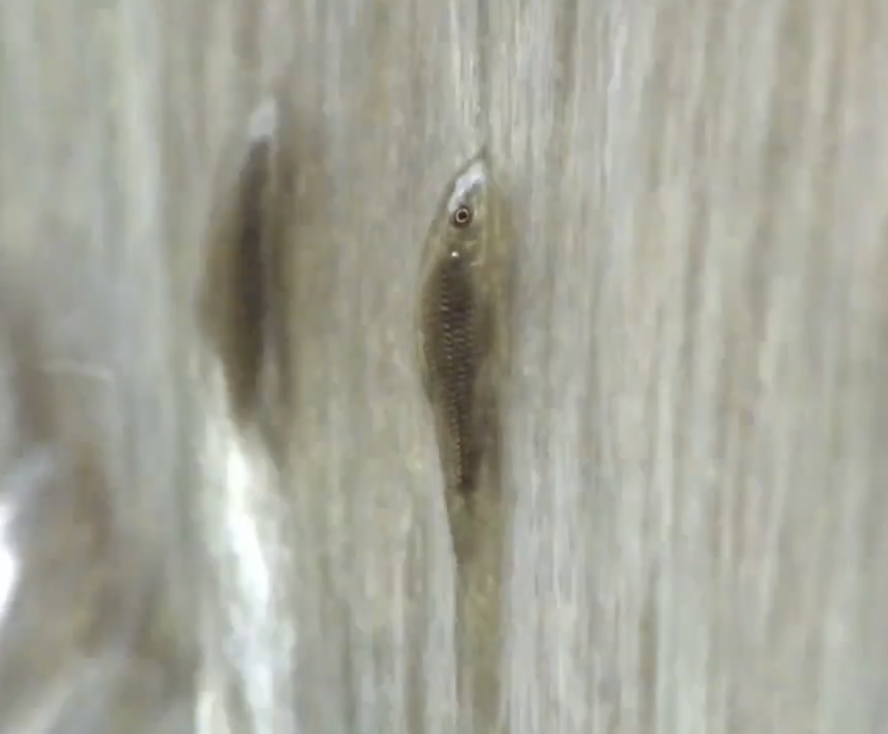
For the Nopili goby, the climb isn’t just a rite of passage. It’s the ultimate test of fitness. If a goby can’t scale the waterfall, it doesn’t get to reproduce. There’s no alternate route, no Plan B. The upper freshwater pools are where the magic happens: mating, egg-laying, and the start of the next generation. This means natural selection is ruthless here. Only the strongest climbers, the ones with the best suction power, the most efficient mouth grip, and the stamina to endure days of vertical crawling, pass on their DNA. It’s the evolutionary equivalent of filtering for rock-climbing superheroes. The result? A species that has become freakishly well-adapted to its vertical world.
Biologists refer to this as a “selective bottleneck,” where only a subset of individuals—those physically and behaviorally suited to a specific challenge — contribute to the gene pool. Over generations, this leads to specialization so extreme it borders on the absurd. Every jawbone, every muscle fiber, every fused fin of the Nopili goby has been fine-tuned for one mission: make it to the top. In a way, the waterfall itself acts as a gatekeeper, weeding out the weak with gravity and current. The goby isn’t just climbing for survival. It’s climbing for love, for legacy, and to make sure its belly-toothed descendants get a chance to do the same.
7. Scientists Are Obsessed with Its Grip
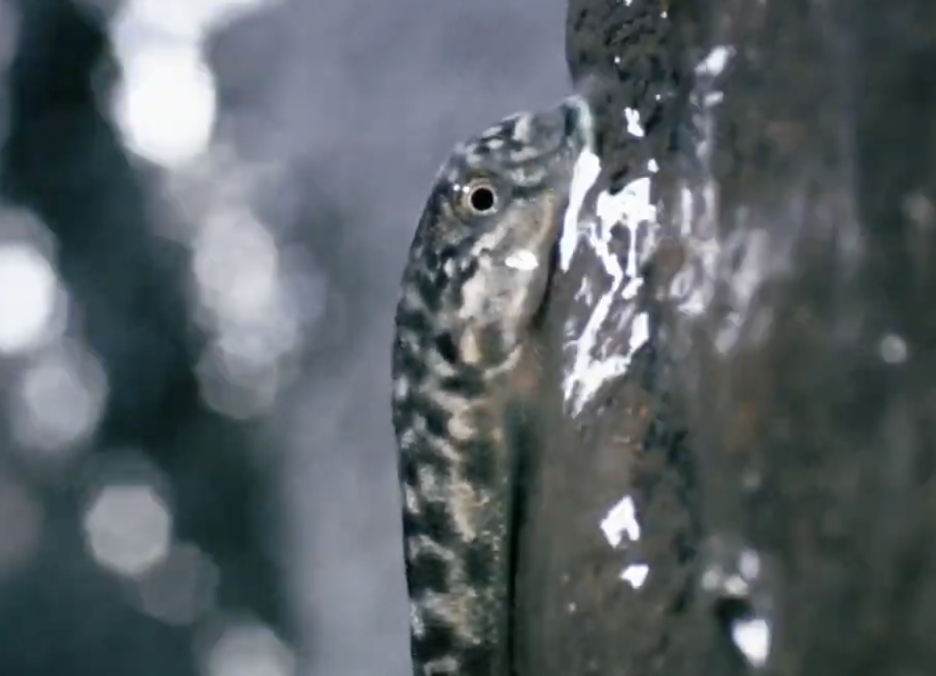
You know a fish is doing something wild when it ends up in engineering journals. Researchers from universities like Clemson and Harvard have spent years studying the goby’s climbing mechanics, particularly its suction disc and how it coordinates movement with its mouth. The grip generated by the pelvic disc is firm enough to withstand turbulent flows several times the goby’s body weight. This feat has inspired scientists to design climbing robots, underwater drones, and even surgical adhesives. Its inch-by-inch ascent might look primitive, but biomechanically, it’s an engineering marvel wrapped in scales and slime. Cameras shooting at thousands of frames per second have revealed just how precisely the goby alternates its anchoring systems, almost like a living piston.
One area of fascination is how the goby’s adhesive disc maintains its grip on rough, wet, algae-covered surfaces, which are conditions that defeat many human-made adhesives. Engineers are attempting to replicate this for use in soft robotics and medical tools, particularly where a grip is needed in wet or moving environments, such as the human body. Even NASA has expressed interest in biological adhesion for tech that might one day cling to alien rock faces. The goby’s approach, characterized by low speed and high friction, coordinated movement, is turning out to be far more stable and reliable than fast, forceful climbs. In other words, this little fish isn’t just surviving. It’s quietly influencing the future of technology while hanging upside down on a waterfall.
8. It’s Practically Invisible on the Rocks
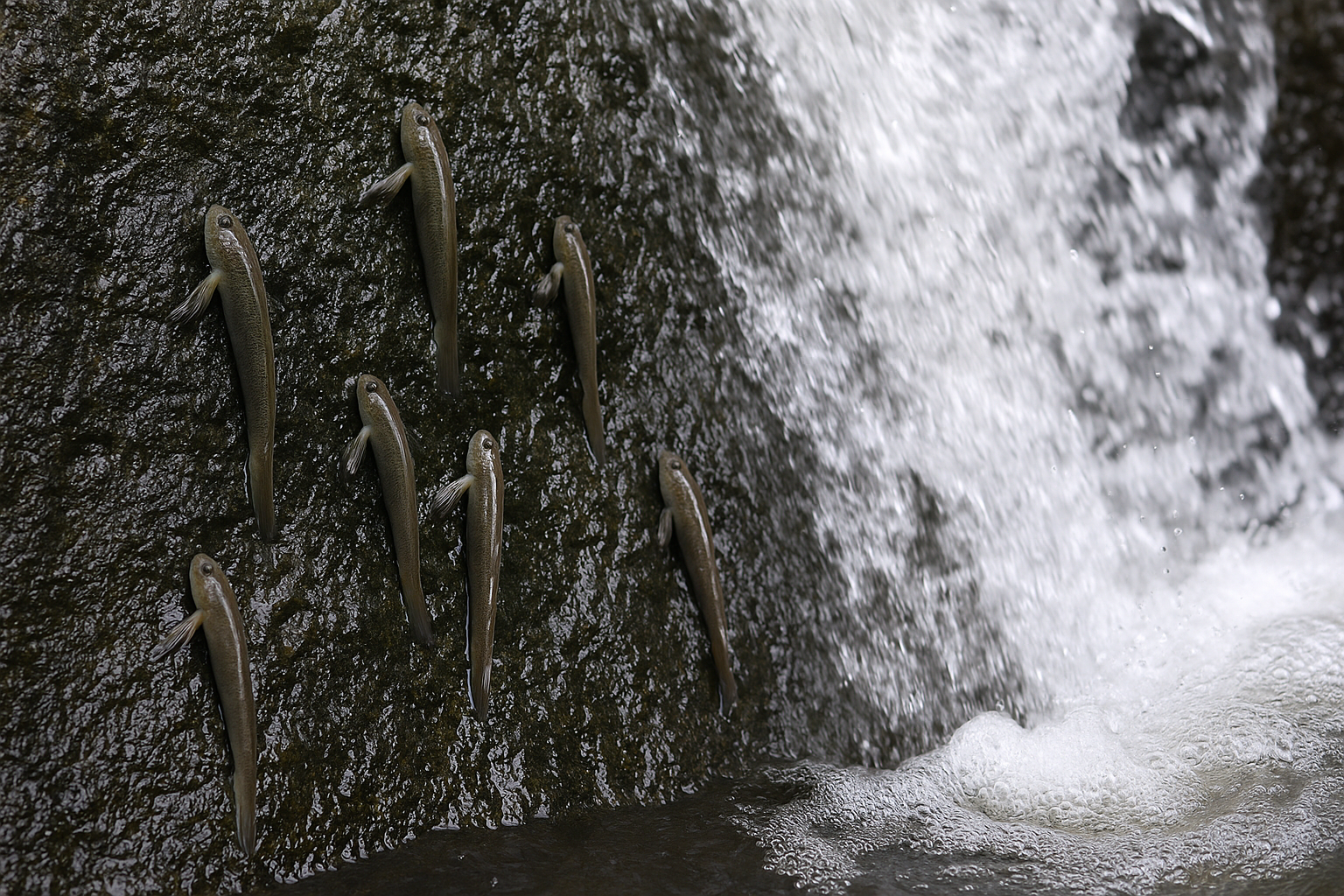
Despite its extreme talents, the Nopili goby isn’t flashy. In fact, it’s nearly invisible against the volcanic rock faces it climbs. With a mottled gray-blue body flecked with earthy tones, the goby blends perfectly into the wet stones of Hawaiian waterfalls. At just 2.5 to 3 inches long, it resembles a bit of moss or a water-stained pebble to the untrained eye. This camouflage is no accident. During its days-long climb, the goby is exposed, slow-moving, and vulnerable, easy pickings for birds or larger fish. Is it the best defense? Stay still, stay stuck, and disappear.
Researchers have noted that even trained scientists often miss gobies in the field until they move. Their skin isn’t just colored like a rock. It reflects light similarly, helping them avoid detection from both above and below. It’s an evolutionary cloak tailored to one of the most dangerous stages of their life. This invisibility also aids during rest periods, when the fish remains motionless on a vertical surface, often for hours. The less you look like a snack, the better your odds of surviving the next pull upward. While many species rely on speed, venom, or armor, the goby’s best survival strategy mid-climb is to become part of the wall itself. It’s stealth, suction, and survival all rolled into one petite package.
9. Other Gobies Climb—But Not Like This

The goby family is surprisingly large, with over 2,000 species worldwide, and yes, some of them are climbers, too. But most stick to gentler inclines or rely solely on suction from their pelvic discs to navigate short distances. What sets the Nopili goby apart is its dual-traction climbing method, a synchronized combo of mouth and belly suction used to scale long, vertical cliffs. This technique, known as “inching locomotion,” is unique among all known gobies and possibly among all vertebrates. It’s a rhythmic, mechanical movement involving suction, release, grip, and pull, repeated hundreds (sometimes thousands) of times throughout a single climb.
Even other Hawaiian gobies, like Awaous guamensis, can’t compete with the Nopili’s climbing finesse. They might scramble up a few feet of rocks, but none use their mouths as a climbing aid, and none are documented scaling waterfalls hundreds of feet high. The Nopili goby’s adaptations, including fused suction fins, belly teeth, and a specially evolved upper jaw, are purpose-built for extreme verticality. This places it in a category of its own among fish, rivaled only by insects or amphibians in sheer climbing ingenuity. While other gobies flirt with elevation, the Nopili has committed to it entirely, scaling Hawaiian cliffs like it’s trying to earn a Ph.D. in geological intimacy.
10. It’s One of the Toughest Athletes in Nature

You might expect the toughest athletes in the animal kingdom to be apex predators or high-speed hunters, but a three-inch fish with suction feet and belly teeth deserves a spot on the podium. The Nopili goby doesn’t fly, leap, or sprint. It climbs waterfalls slowly, methodically, and against the full force of gravity and water. It does this not in a single burst but over the course of days, under constant threat from predators, exhaustion, and dehydration. There’s no training montage, no cheering crowd, just a fish inching its way up a sheer wall like a living suction-powered sherpa. If athleticism is about endurance, coordination, and adaptation, this goby beats out bigger animals without making a sound.
Biologists have called it one of nature’s most extreme examples of physical performance relative to size. Its journey is an epic trial where each successful climber earns the right to breed, passing on genes that value grit over glamour. It’s not strong in the way a bear is strong or fast like a cheetah, but what it lacks in raw power, it makes up for in relentless determination. There are no shortcuts for the Nopili goby, no other route to success. It climbs, or it dies. That’s not just tough. That’s mythological. Somewhere in the lush hills of Hawaii, these silent athletes are quietly doing what no one else dares: conquering cliffs, inch by inch, with nothing but suction and sheer will.
The Fish That Climbs Waterfalls With Its Mouth—and Has Teeth on Its Stomach
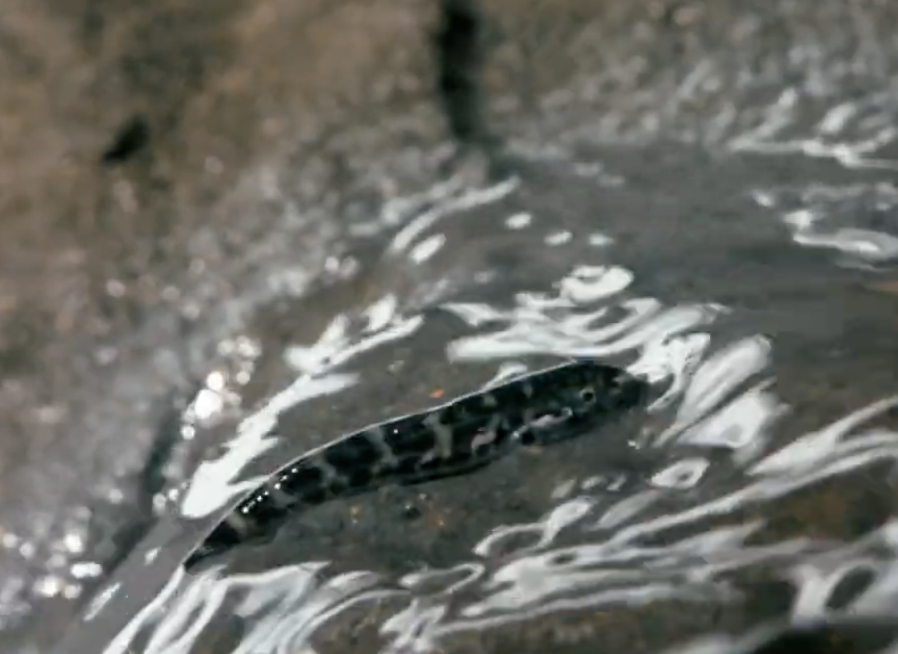
From its built-in suction disc and friction-packed stomach to the bizarre climbing rhythm that scientists are now modeling for medical robots, the Nopili goby is evolution’s answer to extreme sports. It’s camouflaged, tireless, and biomechanically brilliant. While it won’t win any beauty contests, it dominates in the “don’t die while crawling up a waterfall” category. It’s one of the most hardcore athletes on the planet, and it doesn’t even have lungs.
This article This Fish Can Climb Waterfalls—And It Has Teeth on Its Belly was first published on Dailyfetch.net


